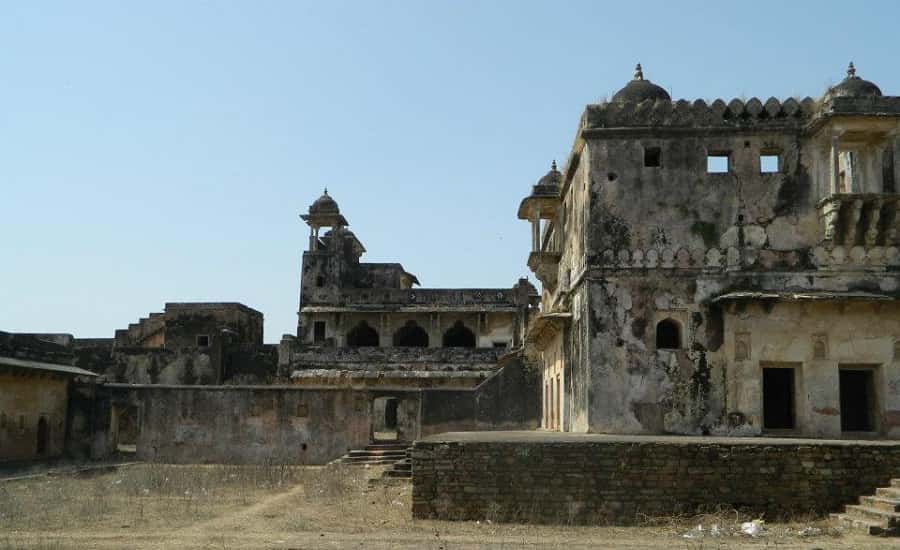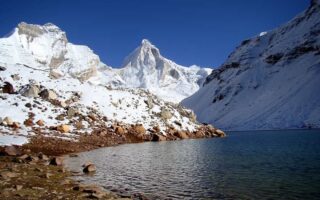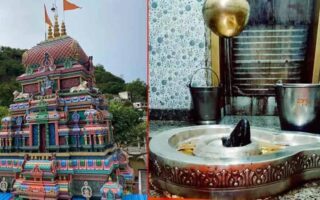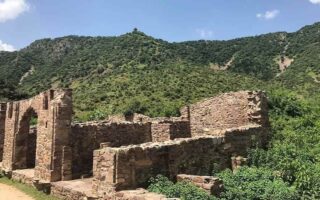An interesting fact about the historical places of India is that the features of such places carry an aura that cannot be matched by the modern construction patterns. No doubt that we have advanced and have reached to new heights of excellence in designing efficient and ergonomic structures, but we still look back at these ancient sites for inspiration. The people who were involved in the construction of these spaces were not as technologically advanced as we are now, yet they have managed to achieve the desired results by putting in their zest for perfection and create one fort that has survived against all odds and is now a popular tourist destination. One classic example of an elegant historical fort is the Rohtasgarh Fort of Bihar.

Location
Rohtasgarh Fort is built in the district of Rohtas. Built over a plateau on the upper course of Son River, the fort is approximately 39 kilometres from Sasaram, the administrative headquarters of the district and 45 kilometres from Dehri, another important town in the district.
History
The fort was built by the 36th ruler of the solar dynasty, Raja Harishchandra. The fort was named after Rohitashva, Harishchandra son. Built atop a hill, the fort was a safe and productive heaven with fertile soils and streams that facilitated cultivation. The fort was surrounded by dense forests where wild animals were abundant, thus making it difficult for the robbers and enemies to enter into the fort premises, unless they were very much clever.
The inscriptions at the fort suggest that it was besieged by rulers from different dynasties. The construction of the road from the foothill to the top of the hill and the installation of gates on the Ghats, along with the fortification has been credited to the Hindu Kings. Two fortifications are still visible at the fort. The artifacts found were dated back to the period of Sher Shah Suri and other rulers who conquered the fort after him, leaving just a matrix used for producing seals, which are said to be from the reign of Sasanka, who ruled over the region in the seventh century.
The reign of Sher Shah Suri began when he conquered the fort in 1539. His attack at this fort was a measure to gain some foothold after losing the Fort in Chunar to Humayun, a ruler of the Mughal Empire. His was not a direct attack on the fort. Instead, he devised a cunning plan by requesting the ruler of the fort to leave behind his women and children along with the state treasure, as he was busy in a fight in Bengal. He pulled his trick by sending the women and children at first, which made the king believe that the king had been honest. However, the palanquins that arrived after those carried Afghan soldiers, who attacked and captured the fort as the unprepared kings fled away. At the time Sher Shah Suri ruled the fort, he employed 10,000 armed soldiers to guard the fort.
Records point that there were actually 14 gates, out of which 10 were closed after Sher Shah Suri captured the fort. The Jama Masjid built towards the west of the fort had been made by Haibat Khan, a close aide of Sher Shah Suri. The primary material used in the construction of three-domed fort is white sandstone. The construction of this Masjid, where a mausoleum of Sher Shah’s superintendent was established, was completed in 1543.
A major renovation work was carried out during the reign of Raja Man Singh, a ruler of the Kachwaha Dynasty. The work included renovation of the whole fort, construction of a grand palace and Persian gardens and cleaning of ponds. Post his death, the ownership of the fort was transferred to the Wazir’s office. During the sixteenth century, Jahangir’s son Prince Khurram came to the fort for refuge. The keys of the fort were handed over to him by Saiyaad Mubarak, who was the guardian of the fort during that period. While fighting a battle to conquer Avadh, he again headed to the fort for safety, but lost the battle.
Mir Kasim, who was the Nawab of Bengal and Bihar in the seventeenth century, lost a battle against the British troops and came to the fort for refuge, but could not hide there for long. The Diwan of Rohtas decided to hand over the fort to the British Captain Goddard, who stayed for a period of two months at the fort. During this period, he destroyed the fortifications and the storeroom and left leaving a few guards behind, who abandoned the fort the next year. The fort remained dormant and saw no footfall until 1857, when the First War of Independence was fought. Babu Kunwar Singh’s younger brother Amar Singh and his companions headed to the fort for refuge.
What to See
The attractions of the fort are:
Hathiya Pol (Elephant Gate)
This is the largest gate of the fort. Built in 1597, it was named after the designs of the elephants engraved on its walls.
The Aina Mahal (Palace of Mirrors)
The Aina Mahal or the Palace of Mirrors was built by Raja Man Singh. He lived in Takhte Badshahi, which is considered to be the most opulent part of the palace. From the top floor of this four-storeyed structure, you get a bird’s eye view of the surrounding. The women’s quarters are built on the third floor of this structure, where one can reach after passing through the cupola. The second floor houses a gallery and an assembly hall.
Raja Man Singh resided on the first floor and his quarter and the ladies’ room were connected through a gateway. The assembly hall displays intricate designs of flowers and leaves etched on the walls and pillars.
The Hanging House
To the west of the fort, one can see a structure which is not mentioned in any of the records stating its purpose or period of construction. It is named as The Hanging House by the local residents, as it looks like it is hanging at the edge of the cliff.
A legend that locals narrate is that this building leads to a cave where there is a grave of a Muslim fakir. It is said that this fakir was thrown thrice into the valley after his hands and legs were tied. However, he miraculously survived each fall, which led to his burial at the site.
Ganesh Temple
This temple is built at a distance of roughly half a kilometre from the Aina Mahal.
Jama Masjid
The Masjid, Mausoleum of Habsh Khan and Sufi Sultan’s Tomb is as beautiful as it can get. This was amongst the first structures of Bihar built in a Rajputana style. Rohatsan temple was dedicated to Lord Shiva, with the sacred lingam housed in the main Mandap. The Mandap and the roof of this iconic temple were destroyed, leaving the ruins behind. The idol like the lingam is missing from the Devi Temple, which can be reached by following a series of 84 steps from the ground floor.
Eat, Drink, Collect
Meals and beverages are available at the various hotels in the Rohtas city itself. Tourists should include purchasing several utility goods made by the local craftsmen in Rohtas. Imitation jewelry and gift items can also be purchased from these craftsmen at a very reasonable price.
Best Time to Visit
Tourists should avoid visiting Rohtasgarh Fort during the monsoons, as the heavy rains can act as a spoilsport and may bring a halt to your pursuit of exploring this place. The temperature soars up to 45 degree in the month of May while it dips down to around 10 degrees in the month of January. Carrying appropriate clothes and accessories according to the time of your visit is thus recommended.
How to Reach
The closest airport to Rohtas is the Lok Nayak Jayaprakash International Airport. At a distance of approximately 160 kilometres, this airport in Patna city provides excellent connectivity with cities like Bangalore, Indore, Delhi, Mumbai, Pune, Lucknow, Chennai, Kolkata, etc.
The closest railway station is in the city of Aurangabad, at a distance of approximately 37.5 kilometres. Once the tourists reach the Patna Airport/Aurangabad Railway Station, they should hire a taxi to reach to the fort. You can board buses run by state road Transport Corporation from almost all the neighboring cities which run to and from Rohtas.


